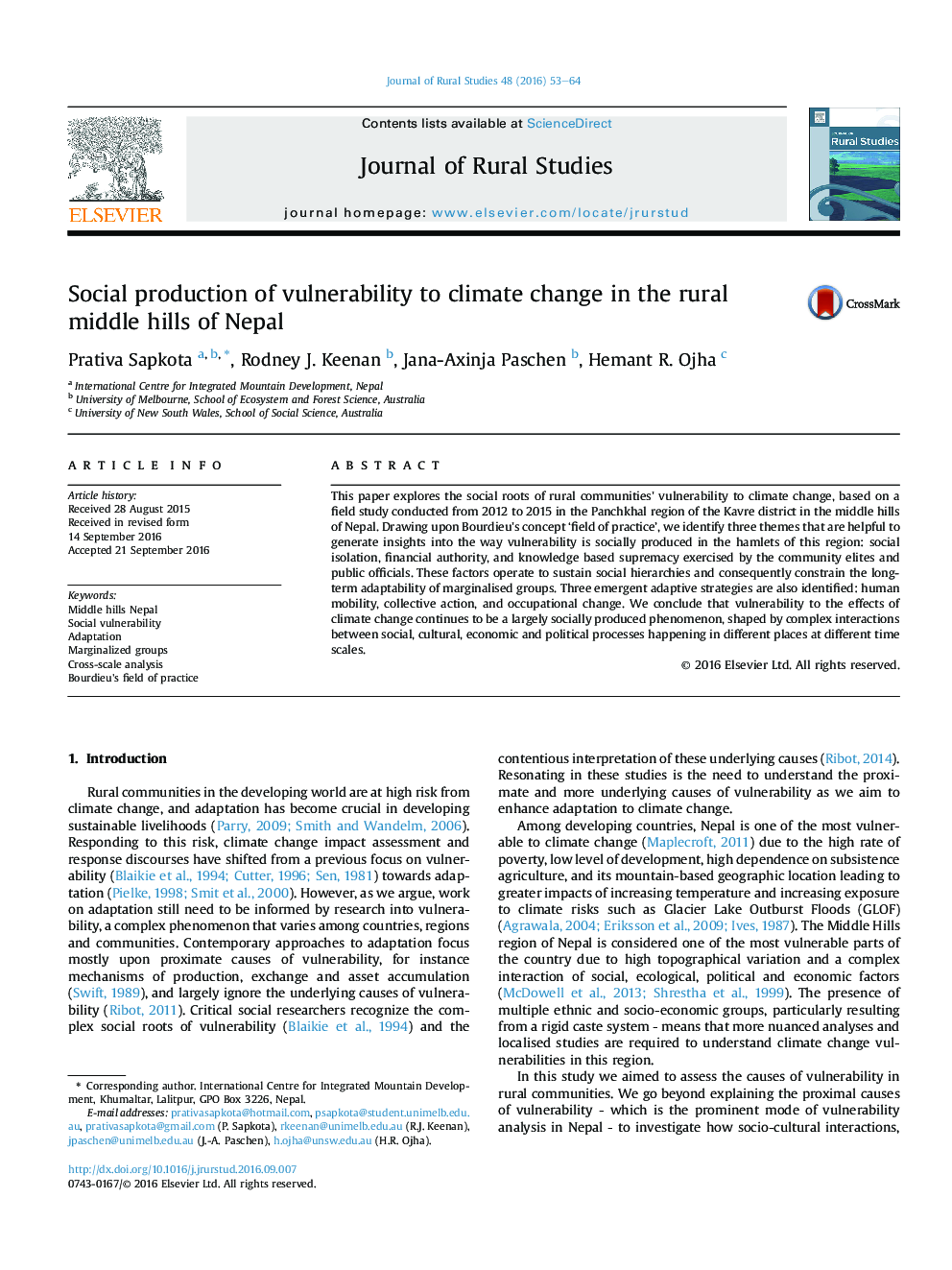| Article ID | Journal | Published Year | Pages | File Type |
|---|---|---|---|---|
| 4759968 | Journal of Rural Studies | 2016 | 12 Pages |
Abstract
This paper explores the social roots of rural communities' vulnerability to climate change, based on a field study conducted from 2012 to 2015 in the Panchkhal region of the Kavre district in the middle hills of Nepal. Drawing upon Bourdieu's concept 'field of practice', we identify three themes that are helpful to generate insights into the way vulnerability is socially produced in the hamlets of this region: social isolation, financial authority, and knowledge based supremacy exercised by the community elites and public officials. These factors operate to sustain social hierarchies and consequently constrain the long-term adaptability of marginalised groups. Three emergent adaptive strategies are also identified: human mobility, collective action, and occupational change. We conclude that vulnerability to the effects of climate change continues to be a largely socially produced phenomenon, shaped by complex interactions between social, cultural, economic and political processes happening in different places at different time scales.
Related Topics
Life Sciences
Agricultural and Biological Sciences
Forestry
Authors
Prativa Sapkota, Rodney J. Keenan, Jana-Axinja Paschen, Hemant R. Ojha,
